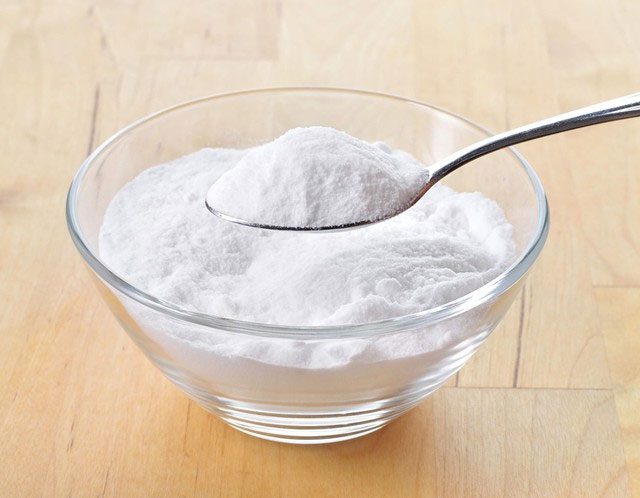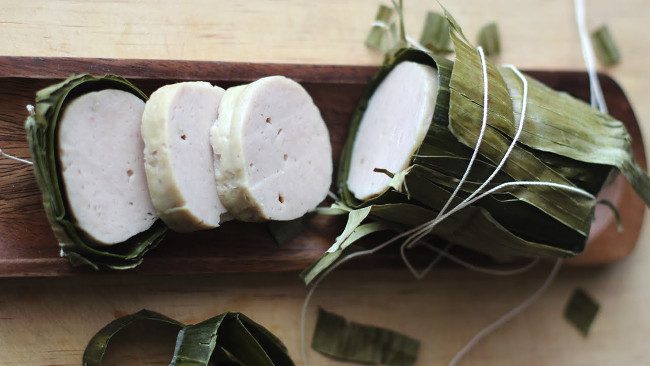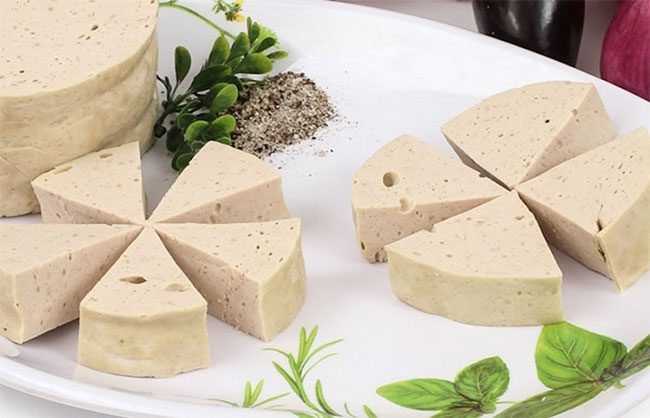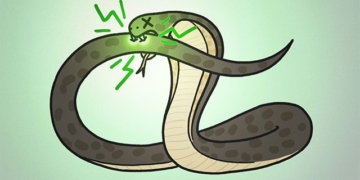When biting into a piece of pork sausage and finding it unusually dry, tough, and smooth, it is likely that the sausage has been treated with borax.
Pork sausage is one of the traditional dishes that is indispensable during festivals, especially during the Lunar New Year celebrations in Vietnam. This dish is made from fresh pork that has been finely ground and can be mixed with other ingredients such as pork fat, fish sauce, and pepper to create a distinctive flavor. According to ancient recipes, pork sausage is wrapped in banana leaves, giving it an appealing natural color along with the chewy goodness of the meat.
Recently, food safety issues in general, and the quality of pork sausage in particular, have garnered significant attention from consumers. One major concern is the use of borax in making pork sausage to enhance its aroma, texture, and appearance.

Borax. (Image: internet).
In the past, borax was used in food technology because it could keep food fresh for a long time without spoilage and also help increase texture. People often added borax to make dishes like rice cakes firmer or to season rice rolls and vermicelli for better chewiness.
However, over time, experts have found that borax is an extremely toxic chemical that can have long-term health effects, including cognitive decline.
According to experts, borax should only be used in industrial applications. One characteristic of borax is that it is a “bioaccumulative substance” in the body due to its high rate of accumulation without being excreted.
The Toxicity of Borax
In a response about borax—a commonly used substance, even considered an essential ingredient in making pork sausage—Associate Professor Dr. Tran Hong Con from the Department of Chemistry at the University of Science, Vietnam National University Hanoi, pointed out that it is actually the sodium salt of boric acid. For a long time, borax has been added to vermicelli, pho noodles, rice cakes, rice rolls, pork sausage, and many other foods to create a crispy texture. Excessive consumption of borax can lead to health issues such as memory problems and hormonal disorders.
Similarly, Associate Professor Dr. Nguyen Duy Thinh from the Institute of Biotechnology and Food Technology at Hanoi University of Science and Technology also stated that borax is highly toxic when added to food.
“Borax is a chemical not included in the list of food additives approved by the Ministry of Health for use in food preservation and processing. This means it can have adverse effects on the body if ingested. In fact, high doses of borax can cause acute poisoning, while lower doses can accumulate and lead to liver and kidney toxicity, which is very dangerous for the body,” said Professor Thinh.

It is very difficult to visually distinguish a piece of pork sausage with borax from one without.
Borax can cause poisoning. Doses of 5 grams or more can lead to acute poisoning and may even result in death. Consuming lower amounts can cause chronic poisoning, affecting the liver and kidneys, leading to loss of appetite and body weakness. Once in the body, borax is difficult to eliminate and accumulates in the liver, and when the accumulation reaches a significant level, it can cause chronic damage.
“Vietnam has banned the use of borax in food production and processing in any quantity or form. However, in reality, many businesses still add borax as an additive to enhance the chewiness and flavor of food,” said Associate Professor Dr. Tran Hong Con.
Research on the toxicity of borax has shown that this substance can cause vomiting, abdominal pain, diarrhea, skin rashes, and peeling. Borax can also lead to nervous system stimulation, resulting in depression or irritation of the meninges. Notably, when borax enters the body, it accumulates in the liver, making it difficult to eliminate. When enough accumulates, it can lead to chronic diseases. Not only does it damage the liver, but borax can also cause degeneration of reproductive organs and infertility.
How to Choose Borax-Free Pork Sausage
According to Associate Professor Dr. Nguyen Duy Thinh from the Institute of Biotechnology and Food Technology (Hanoi University of Science and Technology), it is very difficult to visually differentiate between pork sausage with borax and without it, even experts may find it challenging.
First, to purchase safe pork sausage, consumers should seek out clean sausage producers with a reputation for being borax-free.
Second, consumers can use test strips to check whether the pork sausage contains borax when buying it from markets.
Another tip when buying pork sausage is to cut a small piece off and add 1-2 drops of hydrochloric acid (HCl) to the sample. If the sample contains borax, the turmeric paper will turn red. The intensity of the color corresponds to the amount of borax in the sample. Then, compare the color with a standard color chart to determine the borax content.
Using turmeric paper: This method only checks qualitatively, not quantitatively. You use paper soaked in fresh turmeric juice, dry it, and press it against the surface of the pork sausage. After a minute, if the paper changes color from yellow to orange-red, the sausage contains borax.
Regarding visual identification, Associate Professor Tran Hong Con revealed that good pork sausage will have a sweet aroma, a crispy texture, and a soft feel, without a dry or hard texture, and it should not be crumbly or mushy. However, be cautious of unusually chewy sausages, as they may contain borax.

Pure pork sausage without borax will have visible air pockets when cut.
Associate Professor Dr. Nguyen Duy Thinh noted that delicious pork sausage has a distinctive flavor, and after swallowing, the taste lingers in the throat. When chewing, clean sausage has a sweet aroma, is soft, not crumbly, and does not feel dry or hard. If the sausage has a strong, overpowering aroma, be cautious as it may be flavored with additives.
Alternatively, you can cut the sausage into slices and try to pull both ends apart. If it is chewy and does not tear easily, it is likely that the sausage contains borax. With a little attention, you can recognize borax-containing sausages based on sensory criteria such as color and elasticity.
Furthermore, pure pork sausage without borax or additives will show visible air pockets when cut, while finely textured sausage indicates the presence of additives. Authentic sausage without borax should feel slightly moist to the touch, with an off-white color slightly tinged with pink, while sausage containing borax may feel slightly rough.
Experts suggest that you can observe when cutting sausage. If the sausage is clean, when using a knife to cut, the knife will stick to the surface of the sausage, making it difficult to slice, unlike sausage containing borax, which is slippery.



















































